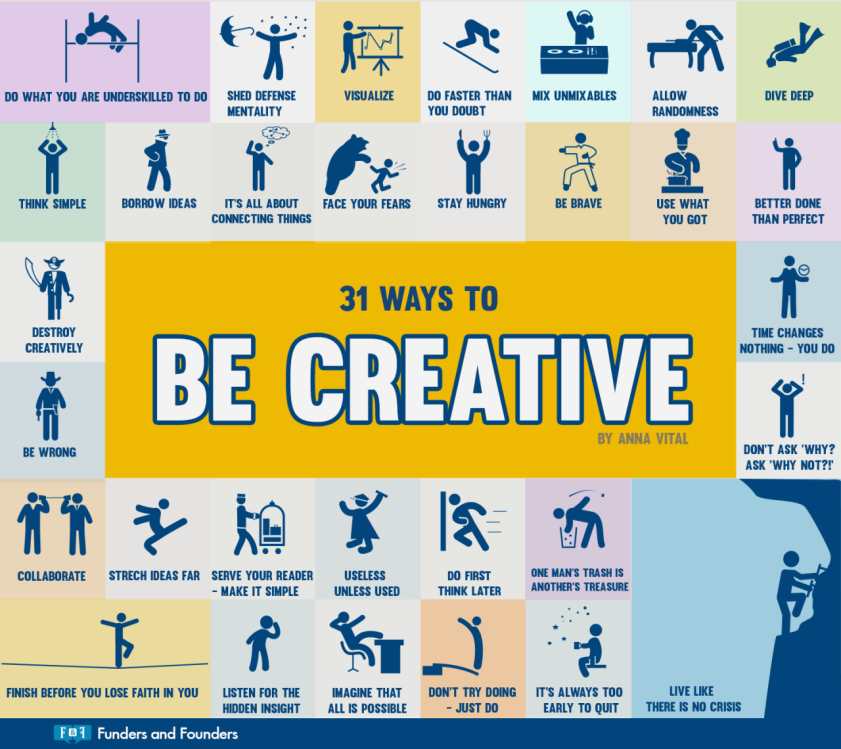
Reposted from Edudemic:
Learning a specific skill set doesn’t have the value in today’s world that it once did. Learning how to be more creative (and thus adaptable) – now that’s what prepares students for life beyond the classroom. Schools and businesses throughout the world are latching onto this idea. Academia has started to embrace providing courses in creativity. Many of the biggest and most successful businesses in the world now practice the 20% rule – the commitment to allowing employees to devote 20% of their work time to thinking creatively and exploring new ideas.
But this trend toward valuing creativity goes beyond the big tech companies that have long treated “innovation” as a buzzword. A 2010 survey of over 1,500 executives found that creativity is valued as the most important business skill in the modern world. “Creative” is one of the most commonly used terms on LinkedIn year after year. Creativity is no longer seen as just being for artists and musicians (not that that view was ever accurate). It’s a crucial skill for everybody to master.
Introducing more creativity into your classroom and assignments doesn’t have to make your job harder. It can actually make it a lot more interesting. Having to go home to a stack of dull papers to grade was never anyone’s favorite part of teaching. Giving assignments that require more creativity will likely result in more engaging work for your students, and a more entertaining grading process for you. Here are five ways to bring more creativity into your classroom…





